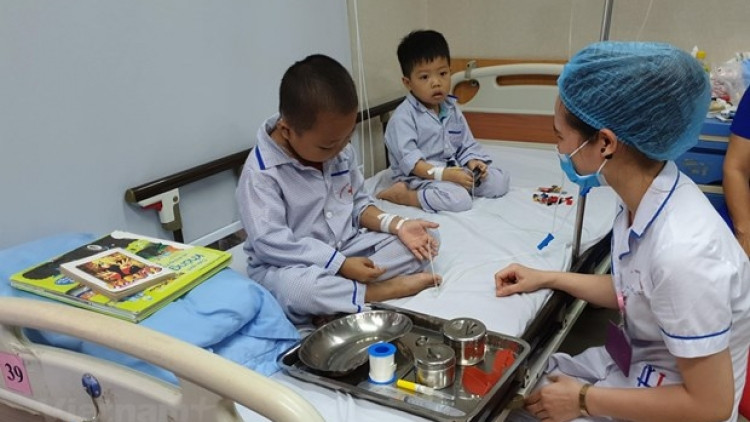
With 13% of Vietnamese people carrying the Thalassemia gene, there are an estimated 14 million people in the nation carrying the diseased gene, of which the proportion of ethnic groups with this type of gene is up to 40%, including the Kinh ethnic group at 9.8%.
Thalassemia, also known as congenital hemolytic anemia, is the most common genetic disease in the world, with an estimated 7% of the global population carrying the gene and being impacted by this pathology.
The disease seriously affects the quality of the population, causing a heavy burden on families and society as a whole.
The disease has two prominent manifestations, including anemia and iron overload in the body. For severe cases, if not treated promptly, it can cause severe symptoms such as facial bone deformities, endocrine dysfunction, growth retardation, liver failure, cirrhosis, heart failure, and even the risk of death.
Each year it is estimated that the entire country has roughly 8,000 more children born with thalassemia, of which approximately 2,000 children suffer severely whilst roughly 800 children cannot be born due to hydroedema.
A person who has this severe disease from birth to 30 years old requires approximately VND3 billion for treatment, and by the age of 21 about 470 units of blood must be transfused to maintain life.
With over 20,000 seriously ill patients requiring lifelong treatment, each year sees the nation need more than VND2,000 billion and at least 500,000 units of safe blood for all patients to be treated.
According to Dr Bach Quoc Khanh, director of the Central Institute of Hematology and Blood Transfusion and vice chairman of the Vietnam Association of Congenital Hemolysis, several decades ago many countries around the world successfully implemented Thalassemia prevention programmes. The fact shows that the investment cost for disease prevention is far lower than that of treatment, while simultaneously bringing high efficiency.
In the nation, the Ministry of Health has issued regulations and guidelines to screen for Thalassemia in pregnant women. However, in order to really push back hemolytic disease, there should be synchronous policies relating to education, health care, and population, such as bringing Thalassemia into the curricula of all grades. This includes actions such as encouraging adolescents and people of childbearing age to be active to test and screen for the Thalassemia gene, Dr Khanh went on to emphasize.
Thalassemia disease has been known about for nearly 100 years and screening programmes have been implemented effectively for more than five decades globally, although the country has yet to give proper attention to Thalassemia prevention.
In order to prevent this disease, it can be viewed as necessary to implement specific action schemes with the joint efforts and consensus of the health care system, political and social organisations, and the entire community.
Source: VOV